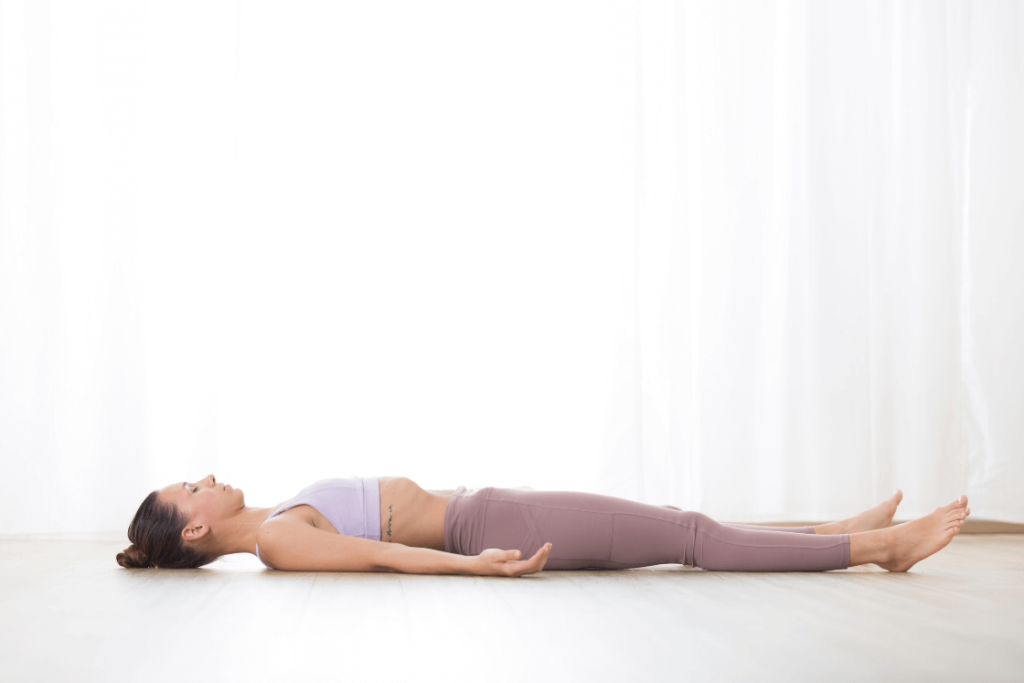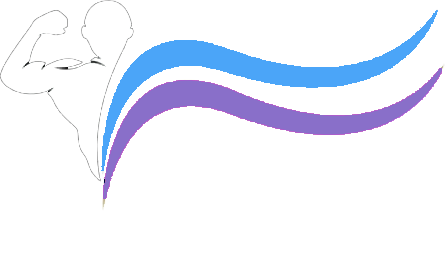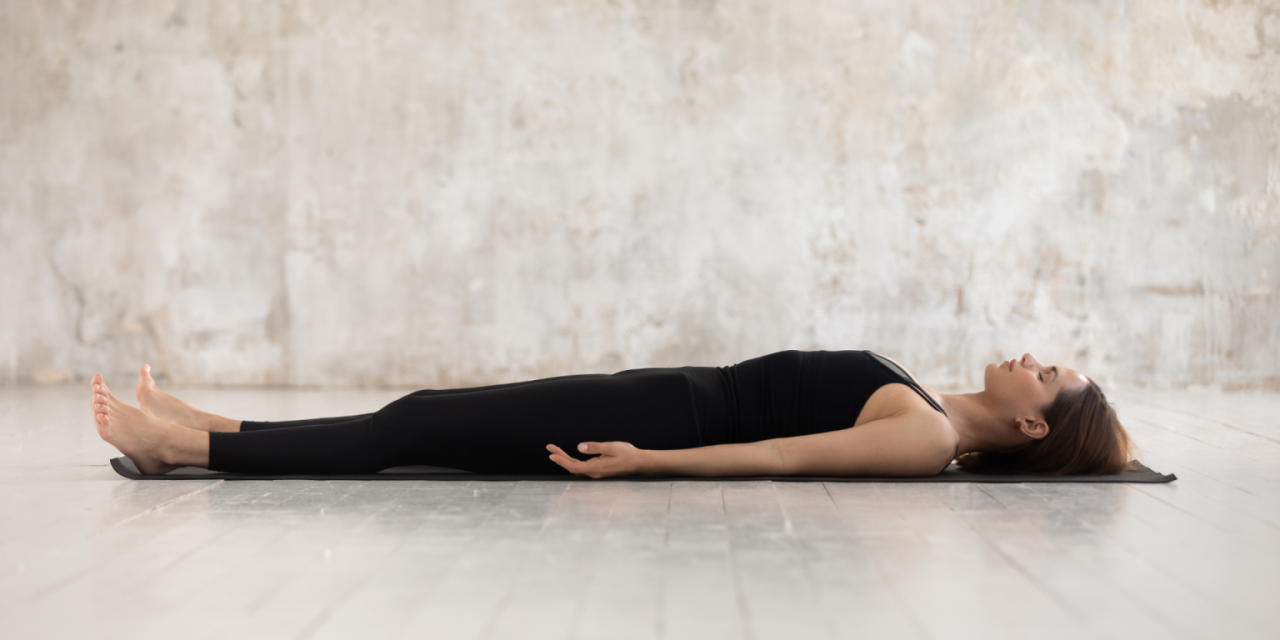In this article:

What is Non-Sleep Deep Rest (NSDR)
Non-Sleep Deep Rest (NSDR) is a transformative practice that induces a state of deep relaxation akin to sleep, all while remaining conscious. It’s a practice that can include guided relaxation, mindfulness, meditation, and controlled breathing exercises, all designed to reduce the activity of the sympathetic nervous system.
The sympathetic nervous system
Think of the sympathetic nervous system as your body’s own personal superhero, always ready to jump into action. It’s like the friend who’s always on too much caffeine, super alert, and ready to run a marathon at a moment’s notice. That sounds good, but even super heroes need a rest.
Non-Sleep Deep Rest (NSDR) enhance the activity of the parasympathetic nervous system, which instead promotes relaxation and recovery.
The benefits of NSDR are numerous and include:
- lowering blood pressure
- reducing heart rate
- improving immune system function
- contributing to a lower risk of chronic diseases.
Additionally, NSDR can improve
- memory
- increase neuroplasticity
- reduce stress
- enhance focus
- better manage pain
- increase energy levels.
If these benefits don’t seem compelling, it may be time to reassess what’s important to you.
Incorporating NSDR into your routine, even briefly, can profoundly affect your well-being and mental health. It’s an effective strategy for anyone seeking to enhance their life quality and find tranquility amidst the hustle and bustle of modern life.
Post-workout recovery
Non-sleep deep rest (NSDR) techniques can significantly enhance post-workout recovery. From a muscular standpoint, NSDR aids in reducing inflammation and muscle soreness, facilitating repair and growth. Enzymatically, it helps balance the body’s biochemical reactions, promoting the removal of waste products that accumulate during exercise. Immune-wise, NSDR can indirectly bolster the body’s defense mechanisms by lowering cortisol levels. This holistic recovery approach ensures that you’re not only building muscle but also nurturing your body’s resilience, leading to improved performance and health.


Sleep improvement
The vagus nerve acts like a relaxation maestro in your body. When you’re ready to wind down, it orchestrates a symphony of signals that tells your body it’s time to transition from the day’s activities to rest. By engaging in Non-Sleep Deep Rest (NSDR), you’re essentially tuning into your body’s natural rhythm, allowing the vagus nerve to conduct a peaceful state that leads to improved sleep. It’s like having a personal assistant inside you, making sure everything slows down and prepares for a good night’s sleep. So, by activating the vagus nerve, you’re setting the stage for a serene and restful slumber.
Stress relief
NSDR is like a gentle breeze for your mind. It’s like turning down the volume of a loud party in your head, allowing you to enjoy the quiet melodies of your thoughts. Instead of a whirlwind of ideas or negative thougts, it’s a soothing lullaby for your cognitive processes, slowing the tempo to a peaceful rhythm that lets you unwind and relax. It’s not about silencing your thoughts; it’s about harmonizing them into a symphony that plays softly in the background, creating a serene soundscape for your mental well-being.


Cognitive function improvement
Non-Sleep Deep Rest (NSDR) techniques, such as meditation and mindfulness, can significantly enhance cognitive functions. By promoting focus and mental clarity, NSDR practices encourage the brain’s neuroplasticity, allowing neurons to forge new connections. This adaptability is crucial for learning new skills effortlessly over time, such as mastering a musical instrument or becoming proficient in a sport. Neuroplasticity also plays a vital role in recovery from injuries, as it enables different brain regions to compensate for damaged areas, ensuring continuity in functions like hearing. Embracing NSDR could lead to profound improvements in both mental agility and resilience.
How are Non-Sleep Deep Rest (NSDR) and neuroplasticity related?
Non-Sleep Deep Rest (NSDR) and neuroplasticity are interconnected through the brain’s ability to mimic deep sleep states. While we sleep, our brain processes the day’s events, storing important memories and discarding trivial ones. Deep sleep, particularly in the early night, is crucial for neuroplasticity related to movement. In contrast, REM sleep, which occurs later, is associated with the forgetting process—creating space for significant memories. For instance, remembering the route to a new office’s restroom is useful, while recalling a minor incident like a pen dropping is less so. Our brains are constantly adapting, learning, and unlearning, with NSDR potentially boosting neurotransmitters that facilitate neuroplasticity.
The role of Non-Sleep Deep Rest (NSDR) for the immune system and the ability to relax
Immune system
There’s no direct evidence that NSDR enhances it. However, by reducing stress, NSDR may indirectly bolster the immune system, lowering the risk of stress-induced conditions and promoting overall resilience.
Vagus nerve activation
NSDR can activate your vagus nerve, which signals to your body and mind that you are safe and can relax. This also leads to an increase in positive emotions and a decrease in depression. This can help you feel more happy and optimistic. The vagus nerve is also essential in fighting inflammatory processes in the body.
How can you use it?
It’s an ideal technique to perform before bedtime to ease the transition into sleep, upon waking to begin the day with tranquility, or at any point during the day to actively calm the body and provide the mind with restful reprieve.
Studies indicate that just 10 minutes of NSDR can substantially enhance your health and overall well-being. Remarkably, a brief session of NSDR, even as short as 10 minutes, can be as rejuvenating as a nap, making it a valuable tool for recharging, even during work hours.
Let’s try it!
To ensure a tranquil experience, find a serene spot where interruptions are unlikely for at least 10 minutes. Opt for a comfortable lying position, whether it’s on a bed, couch, or mat. Ensure your warmth and eliminate any potential distractions. With your eyes closed, take several deep breaths to relax both body and mind thoroughly. Engage with a guided Non-Sleep Deep Rest (NSDR) audio or use a personal script. Numerous free NSDR recordings are available online, or you can craft a script drawing from the following Yoga Nidra principles.
For novices, it’s often simpler to use a recorded guide initially, or an instructor. Feel free to reach out for a personalized session and contact me here.
Here’s an outline of the activities we would undertake during a Yoga Nidra or NSDR session.
1 – Set your goal
In the “intention stage”, set a positive affirmation or goal for yourself that you aspire to achieve or manifest in your life. Examples include affirmations like “I am calm and confident,” “I will slow down my heartbeat,” or “I will relax to the point where sleep comes easily.”
2 – Calm down your breathing
Pay attention to your breathing: notice the air moving in and out through your nostrils, chest, and abdomen. If it feels comfortable, aim to extend the inhale phase longer than the exhale phase. For instance, inhale calmly and gently for 4 seconds, then exhale for 6 seconds.
3 – Start scanning your body
In the body scan phase, shift your focus to different body parts sequentially, starting from your toes and progressing to your head. There’s no need to move or tense any part; simply be aware of how each area feels and relax it as much as you can.
4 – Be mindful of your breathing
As you perform the body scan, you may become conscious of your breathing. Maintain focus on your natural breathing rhythm without forcing your abdominal muscles or chest to breathe in a specific manner.
5 – Be mindful of your physical sensations
You’ll notice various physical sensations throughout your body, such as warmth, coolness, tingling, heaviness, or lightness. Rather than evaluating or responding to these sensations, acknowledge their presence and let them pass. A common sensation is a tingling in your fingertips during their scan.
6 – Let go of your emotions
Emotions may also surface, including joy, sadness, anger, or fear. Instead of judging or reacting to these emotions, continue with your body scan. Acknowledge the emotions and allow them to ebb away naturally.
7 – Let go of your thoughts
Thoughts may come to mind, such as memories, images, and words. You might start to worry about future tasks or reflect on past actions. As you continue your body scan, these thoughts will pass. Allow them to come and go without judgment. It’s natural to experience negative thoughts while trying to relax; everyone has them. Remember, your mind is vast, and from a higher perspective, these thoughts are fleeting and insignificant, like clouds drifting by.
8 – Enjoy total relaxation
The most profound moment is when you realize you’re completely relaxed and in control. This may not occur immediately, perhaps not on the first, second, or even third attempt, but it will happen. Savor the state of pure awareness, even if just for a moment.
9 – Enjoy the results
During the return phase, you reconnect with your body and environment. Wiggle your fingers and toes, stretch your limbs, and gently open your eyes, carrying the tranquility you’ve cultivated into the rest of your day.
Disclaimer
Consult a health professional before making significant changes to your diet, exercise routine, or supplement regimen. The information provided in this blog is intended to convey the latest scientific research in an accessible manner. However, it does not replace the advice of a medical professional. Take your health conditions into account and consult a qualified healthcare provider to ensure that the decisions you make are safe and appropriate for your specific health needs. Ultimately, you are responsible for your own health and well-being.





